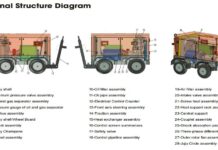The Australian construction industry is at present undergoing a shift towards more sustainable construction methods as well as green building practices because of the elevated awareness and also concern when it comes to environmental sustainability.
The want to construct modern infrastructure that goes on to mix well with the environment while at the same time being cost-effective as well as efficient, reducing waste, minimizing energy usage, and also promoting human well-being happens to be the driving force behind this transformation.
It is well to be noted that green buildings offer a different approach in the construction arena that is specifically designed in order to minimize the adverse environmental effects that concern buildings and operating structures. The construction industry happens to be holding a significant influence when it comes to the environment, making it essential to shift towards practices that are sustainable. Prioritizing net-zero construction is indeed vital when it comes to safeguarding the resources.
Net-zero construction refers to construction and building projects that do not put out any net greenhouse gases across their entire lifecycle. Sustainable construction practices that go on to involve the use of sustainable materials as well as a focus on energy efficiency and renewable energy sources help building projects to effectively lessen both ongoing constructions along with operational costs, which results in the creation of efficient buildings that lead to lower energy as well as utility bills. This is achieved by decreasing water consumption and also waste generation.
Net-zero construction happens to be of great importance as it goes on to offer plentiful benefits. Firstly, it enables in reducing the environmental impacts of buildings. Besides, it also leads to significant cost savings and enhances the indoor environment for the occupants, making sure of their well-being. Lastly, net-zero construction also has broader social and community benefits. The growth they have gone on to experience happens to be a clear indication of their viability and the increasing awareness of their importance.
It is well to be noted that net-zero buildings along with sustainable construction have been around for a while, but there are essentially three significant trends that are at present fueling greater interest and adoption in this field.
Sustainable materials- such as the likes of bamboo, wool, or even cork, are being used as replacements for traditional building materials. These materials either happen to be renewable or made from recycled resources. This shift not just helps to lessen the environmental impact but, at the same time, promotes long-term sustainability. These materials are very well known for their durability, low maintenance needs, and minimal environmental impact, thereby making them an intelligent and sustainable option to go for. In addition, they also help to enhance the indoor air quality by reducing harmful chemicals’ presence, thereby creating a healthier environment for living as well as working.
Green roofs- involve partially or fully covering a roof with the help of vegetation. This practice offers many benefits, like absorbing rainwater, reducing stormwater runoff, elevating water as well as energy efficiency, and expanding the lifespan of the roof. Moreover, their capability to cool the air aids in lessening the urban heat island effect, which refers to urban areas experiencing higher temperatures as compared to their surrounding regions due to human activities as well as population density. This, in turn, helps reduce energy consumption and greenhouse gas emissions. Also, these areas also serve as a setup for birds and other wildlife, hence enriching the local biodiversity.
Passive design- makes use of natural sources such as the sun and wind so as to minimize heat gain and loss and, in a way, increase the energy efficiency of the building. Designs that are customized to a building’s local climate can efficiently regulate indoor temperatures, ensuring comfort without the need for extra heating or cooling. This not only helps conserve energy but also leads to saving costs. By reducing a building’s energy utilization and overall environmental impact, it also helps with healthier indoor air quality and creates a comfortable living or working space.
The construction industry is leading the way when it comes to environmental sustainability, as it happens to be actively adopting new trends so as to reduce carbon footprints, elevate energy efficiency, and at the same time contribute positively to the environment. The evolution of green buildings happens to be a clear demonstration of the sector’s ability to adapt and also its dedication to making sure of a sustainable future for generations to come.
Innovative trends when it comes to green building are having a significant impact on traditional construction methods and are also shaping the future of the industry. The Australian construction industry can move towards a future in which buildings are not just built to last but have a positive impact on the environment and across the communities they serve by accepting net-zero buildings, materials that are sustainable, green roofs, as well as passive design.





























